
How DO you exercise on a budget?
There are so many pressures to spend your hard-earned money on, well, ummmm ….. basically everything! Including exercise. If you tune into the world around you or if you’re easily hooked into comparing yourself to others, you’ll probably believe that you HAVE to pay for a gym membership, you HAVE to buy fancy equipment to get fit, and that you HAVE to have the latest super-tech clothes if you intend to work up a sweat (which kind of goes along with exercise!).
Well I’m telling you that all these have-to’s are simply not true. Sure, some of those fancy clothes or equipment can enhance your exercise, but for aeons humans have coped quite well with little or no special exercise equipment. I mean, exercise is basically improving your strength and aerobic health through activity that puts a load on your body. It doesn’t HAVE to cost anything, and crying poor is never a reason to stay on the sofa.
Back in my day …..
Ask your grandparents or great grandparents (if they’re still around) and they’ll tell you what it was like back in their day. I bet they’d say no one needed any gyms or fancy schmancy pants in the olden days: exercise consisted of a hard day’s work out on the farm fixing fences, collecting and chopping wood for the kitchen fire, walking to the shop and doing the laundry in a boiler!
you what it was like back in their day. I bet they’d say no one needed any gyms or fancy schmancy pants in the olden days: exercise consisted of a hard day’s work out on the farm fixing fences, collecting and chopping wood for the kitchen fire, walking to the shop and doing the laundry in a boiler!
You don’t need a big budget!
Yes, times have changed and it’s a different world we live in, but there are some things that have stayed the same. To exercise on a budget, you simply get back to the basics – focus on your daily dose of physical activity instead of the frills-and-all approach that can suck you in. Get yourself a decent pair of shoes, pull on some comfy clothes and a hat. Slap on some sunscreen. Grab a bottle of water. And you’re all good to go walking, one of the best and most accessible types of exercise we have.
Why is walking ideal? Oh my goodness, let me count the ways!
- You can set your own pace
- It’s convenient – slip on your shoes and get out the door no matter where
 you live or work or travel
you live or work or travel - You can do it alone or in a group
- You’ve probably already got everything you need to go walking
- If you don’t have everything, you still don’t HAVE to spend a lot to get started
- No special equipment needed
- It’s free in general – to tell you the truth, there are a few places I’ve been to that charge a small fee such as a day entry fee to some National Parks or car parking fees in busy tourist or urban spaces, but that’s the exception not the rule. Walking is one of the cheapest ways to exercise on a budget.
Walking ….. “BORING!”
Walking is boring, you say? Well, anything’s boring if you repeatedly do the same thing day after day, in the same place, and in the same way.
Never be bored again!
Here are some ideas to vary up your workout so you’ll never be bored again, even if you need to exercise on a budget (and that’s most of us)!
- Mix it up – walk in different places

- Choose different length walks – some days go long, and other days go short
- Go solo, or meet up with a buddy
- Join a walking group
- Have a go at Park Run
- Change up which direction you go on your usual route
- Challenge yourself to an uphill climb
- Relax with a downhill walk
- See the city sights on an urban walk
- Climb those stairs – repeatedly!
- Go exploring on a water walk – river, dam, ocean
- Treat yourself to a bushwalk – check out National Parks, State Forests, reserves

- Wander along the beach, feel the sand between your toes
- Walk with a purpose: walk to work, school, a friend’s place, bus or train station, shops
- Swap your usual routine and enjoy the sights at a different time of day
- Grab a map and compass and give orienteering a go
- Use a navigation app or device to pre-plan your walk – you can even be really creative by designing a funky picture that overlays the streets and then follow that on your walk
- Pace the paddock or local park
- Walk with a backpack for added load, or take some light hand weights
- Walking meetings are all the rage!
- Have a walking break at lunch time or after work to wind down and de-stress
- Leave your car a few kilometres from work or the train / bus station and walk the rest of the way
- Earn as you walk – deliver newspapers or pamphlets house-to-house
- Go window shopping
- Take your kids for a walk after school while everyone chats about their day
Walking can be your go-to exercise too!
Walking has always been my go-to exercise because I can do it almost anywhere, any time, with little equipment, no expense, and all the benefits of feeling great and knowing I’m giving my future health an awesome boost! And you can too! Start with any of the ideas above and let me know how you go, or share your other ideas with me on how to exercise on a budget.
Discovering mountain biking as life’s ultimate parallel universe in her middle age, Kathryn Walton shares information and reflections in ‘Daisy Spoke’ that inform, inspire and empower women to a healthy and active lifestyle.


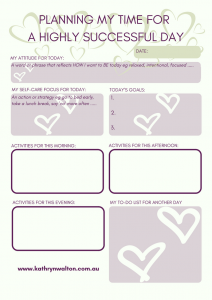

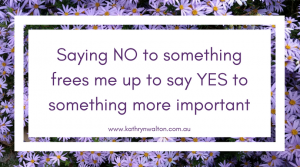
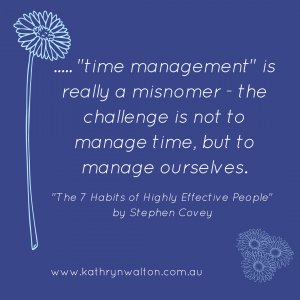
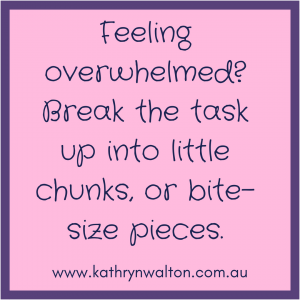

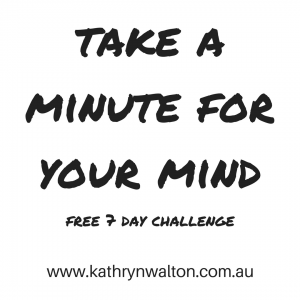
 make the best ‘recipe’ for resilience and happiness – our world is full of distractions and quick-fix ideas. So, here I’d like to offer you some of the action-based ingredients that stand out through the ages and in all parts of world, and that are now backed up by rigorous research. In the next blog I’ll outline some of the very powerful mind-based strategies you can add to your mix to really step into your strength.
make the best ‘recipe’ for resilience and happiness – our world is full of distractions and quick-fix ideas. So, here I’d like to offer you some of the action-based ingredients that stand out through the ages and in all parts of world, and that are now backed up by rigorous research. In the next blog I’ll outline some of the very powerful mind-based strategies you can add to your mix to really step into your strength.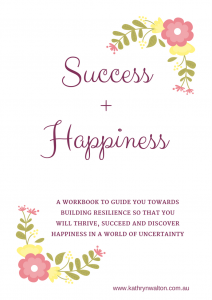 I have an EXCITING OFFER for you!
I have an EXCITING OFFER for you!


 Kathryn Walton shares information and reflections in Daisy Spoke that connect, inspire and self-empower women to make healthy choices for themselves.
Kathryn Walton shares information and reflections in Daisy Spoke that connect, inspire and self-empower women to make healthy choices for themselves.
 thought, we often don’t even realise that we’ve grabbed hold of it. We can become firmly attached to it and we can have difficulty letting it go. We can find ourselves stuck, squirming and wriggling with the discomfort just as a fish does as it’s reeled in from the water.
thought, we often don’t even realise that we’ve grabbed hold of it. We can become firmly attached to it and we can have difficulty letting it go. We can find ourselves stuck, squirming and wriggling with the discomfort just as a fish does as it’s reeled in from the water. Daily practice of simply noticing your thoughts as they arise during an activity helps to train your brain to notice thoughts arising at other times, and to notice that they are simply thoughts or mental events. If you find the fish hook imagery useful, you can notice the hooks (or thoughts) being cast out, and you can notice which hooks (or thoughts) you cling on to.
Daily practice of simply noticing your thoughts as they arise during an activity helps to train your brain to notice thoughts arising at other times, and to notice that they are simply thoughts or mental events. If you find the fish hook imagery useful, you can notice the hooks (or thoughts) being cast out, and you can notice which hooks (or thoughts) you cling on to. Kathryn Walton shares information and reflections in Daisy Spoke that connect, inspire and self-empower women to make healthy choices for themselves.
Kathryn Walton shares information and reflections in Daisy Spoke that connect, inspire and self-empower women to make healthy choices for themselves.